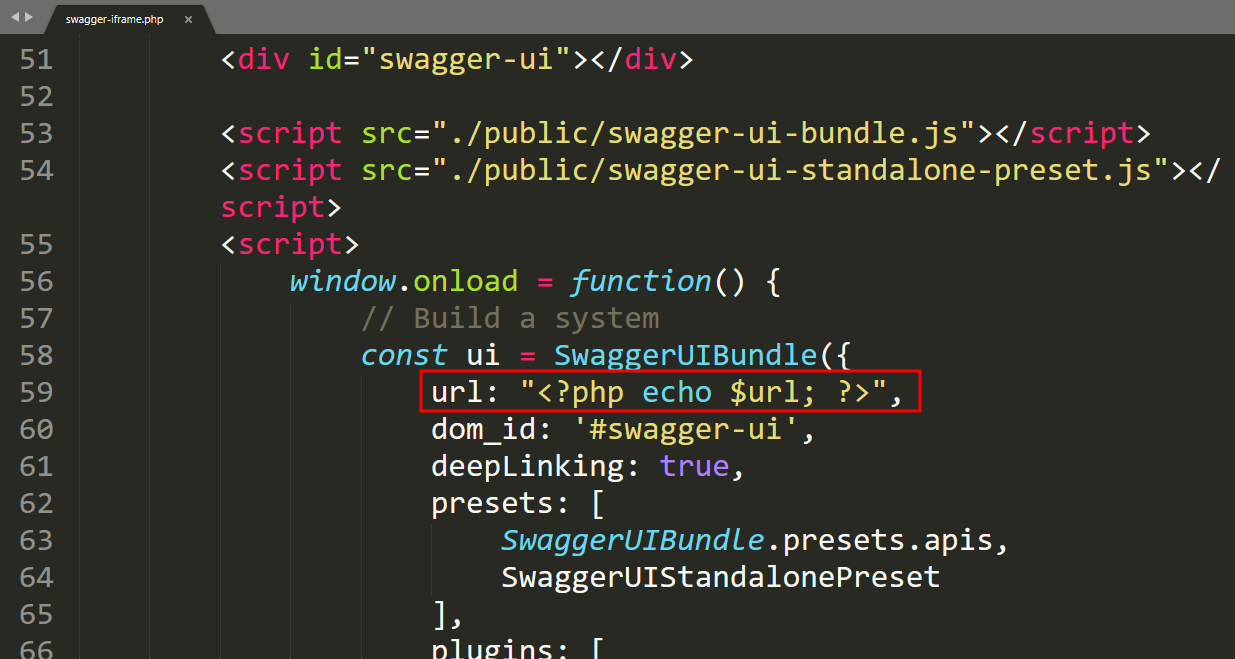Headline
CVE-2022-0381: WP_plugin_Embed-Swagger_XSS_PoC.md
The Embed Swagger WordPress plugin is vulnerable to Reflected Cross-Site Scripting due to insufficient escaping/sanitization and validation via the url parameter found in the ~/swagger-iframe.php file which allows attackers to inject arbitrary web scripts onto the page, in versions up to and including 1.0.0.
WordPress Plugin Embed Swagger 1.0.0 - Reflected Cross-Site Scripting
Exploit Title
WordPress Plugin Embed Swagger 1.0.0 - Reflected Cross-Site Scripting
Exploit Author
Muhammad Zeeshan (Xib3rR4dAr)
Date
January 21, 2022
Plugin Link
Embed Swagger
Version
1.0.0 (Latest)
Tested on
Wordpress 5.8.3
Vulnerable File:Line
/wp-content/plugins/embed-swagger/swagger-iframe.php:59
Vulnerable Parameter
url
Proof of Concept
/wp-content/plugins/embed-swagger/swagger-iframe.php?url=xss://"-alert(document.domain)-"
Google Dork
inurl:/wp-content/plugins/embed-swagger
CVE
CVE-2022-0381
Description
The shortcode provided by Embed Swagger plugin allows embedding Swagger json/yaml files into WordPress pages and posts. An iframe is used to host the external content, with some styling to mesh it with the host page or post. The external spec is rendered using Swagger UI. During pentest of a client’s wordpress site, enumerated that plugin named Embed Swagger v1.0.0 is in use. It allowed to import Swagger files from external URLs via url parameter and displayed them. Tried XSS via malicious json/yaml file hosted on external server but it was not vulnerable. Downloaded plugin for a code review and found that in file embed-swagger/swagger-iframe.php, url parameter is reflected back in JavaScript context if input is a valid URL.


Function filter_var with second argument FILTER_VALIDATE_URL is used to check if URL is valid. A malicious URL such as http://example.com/?id="-alert(1)-" can be passed as input which will get reflected as url: "http://example.com/?id="-alert(document.domain)-"" in JavaScript context leading to XSS.
Vulnerable Code
Vulerable File: /wp-content/plugins/embed-swagger/swagger-iframe.php:59
Vulnerable Code:
… 8: $url = $_GET[‘url’]; 9: $url = filter_var( $url, FILTER_VALIDATE_URL ); … 59: url: "<?php echo $url; ?>", …
Line 59 prints value of parameter url without escaping or encoding it properly.
Fix
Remove <?php echo $url; ?> from line 59. There is no need for this since value of url parameter is fetched from URL using JavaScript. Or urlencode $url on line 59
or
59: url: "<?php echo urlencode($url); ?>",
Impact
An attacker can share a crafted URL with victim, which when clicked/visted by victim will allow an attacker to execute malicious JavaScript in victim’s browser. If any logged in admin/user is targeted, it can be used to perform administrative tasks which can lead to Remote Code Execution.
Proof of Concept
Payload: xss://"-alert(document.domain)-"
PoC: http://127.0.0.1/wp-content/plugins/embed-swagger/swagger-iframe.php?url=xss://"-alert(document.domain)-"

